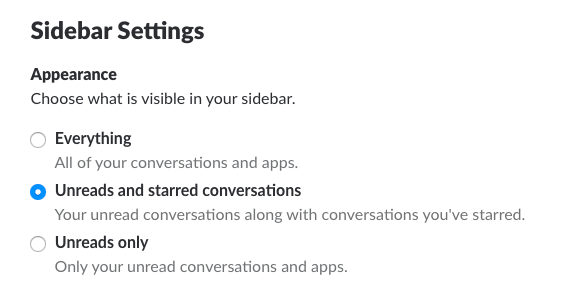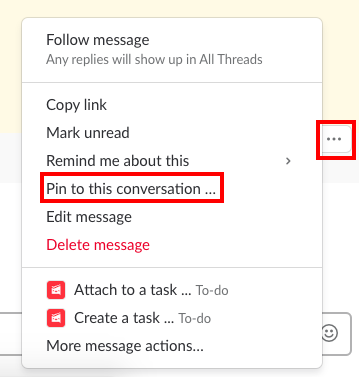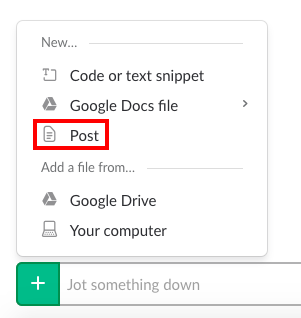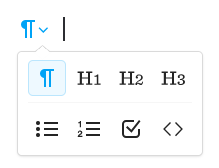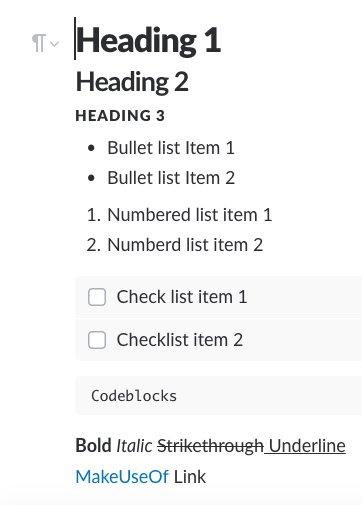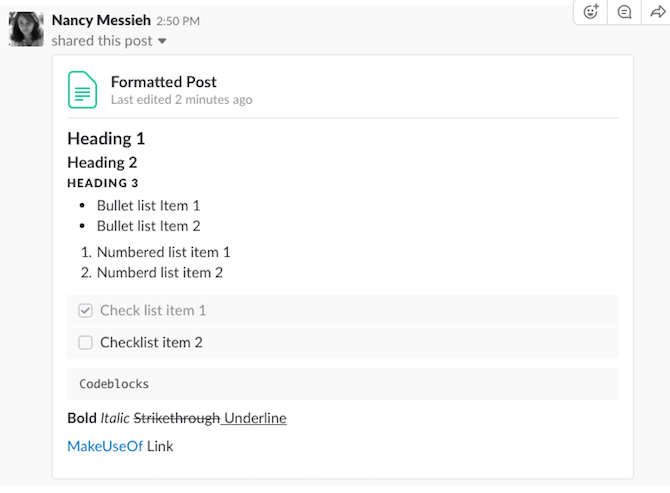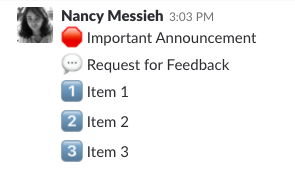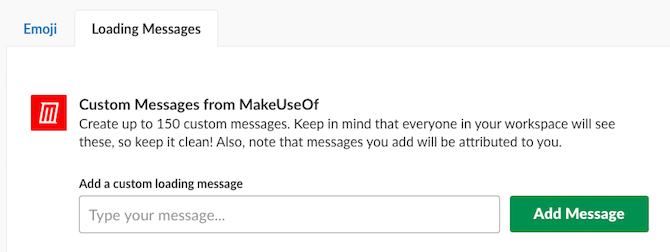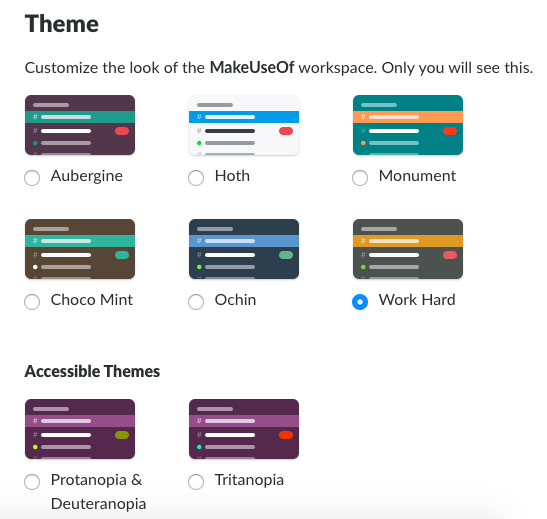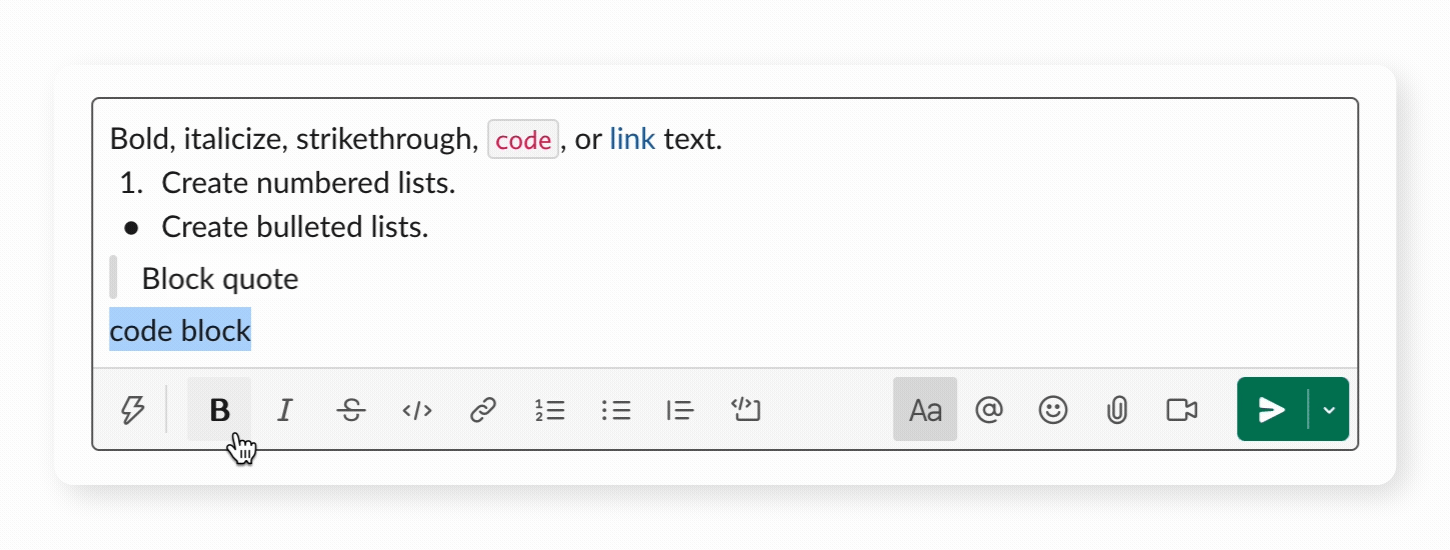как slack вставить код с форматированием
Как использовать Slack: советы по деклаттеру, форматированию и настройке
Независимо от того, являетесь ли вы новичком в Slack или уже много лет используете его, есть несколько полезных настроек и инструментов, которые стоит использовать для настройки и очистки, чтобы обеспечить максимальную отдачу от коммуникационной платформы.
Советы по снижению блеска
Поддерживать занятую группу Slack можно довольно быстро. Есть несколько простых настроек, которые вы можете изменить, чтобы очистить Slack и сделать его более управляемым.
Удалить предварительный просмотр ссылки
Существует четыре основных способа удалить предварительный просмотр ссылок в Slack:
К сожалению, Slack не позволяет вам давать гиперссылки на слова, что было бы отличным способом сохранить внешний вид ваших сообщений.
Храните непрочитанные сообщения в одном месте
Попытка идти в ногу с несколькими каналами может стать подавляющей, особенно если вы являетесь частью большой группы Slack. Если вы хотите более упорядоченный просмотр ваших сообщений, вы можете быстро просмотреть все непрочитанные сообщения в одном месте.
Если функция еще не включена, перейдите к Настройки> Боковая панель> Показать все непрочитанные.
Это позволит разместить удобную ссылку на все непрочитанные сообщения во всех каналах Slack на боковой панели непосредственно под вашим именем.
Когда вы включите это, вы также получите «Особенности«- что Слэк считает самыми важными сообщениями, опубликованными с момента вашего последнего посещения.
Slack выбирает основные моменты на основе ваших взаимодействий с людьми, каналами, файлами и приложениями. Основные моменты можно просматривать в соответствующих каналах, а до десяти выделенных сообщений, связанных в верхней части Unreads Вкладка.
Очистить провисшую боковую панель
Боковая панель Slack — это ключ к удобной навигации по платформе. Вы можете очистить и упорядочить боковую панель, сделав ее менее беспорядочной и поместив вещи, которые наиболее важны для вас, под рукой.
Идти к Настройки> Боковая панель сделать свой выбор для того, что отображается и в каком порядке:
Вы можете выбрать для отображения:
Если вы обнаружите, что более шумные каналы отвлекают внимание, вы можете отключить их, открыв канал, нажав Настройки> Без звука [название канала].
Pin или Star Важная информация
Если есть какая-либо важная информация, которой делятся на Slack, то найти ее через несколько дней, не говоря уже о месяцах, может быть реальной проблемой. Чтобы отслеживать важные сообщения в Slack, вы можете прикрепить или пометить их.
Чтобы отслеживать важные сообщения только для себя, пометьте их, щелкнув звездочку в меню, которое появляется при наведении курсора на сообщение.
Чтобы просмотреть помеченные сообщения, щелкните звездочку в меню в верхнем правом углу любого канала или сообщения.
Если вы хотите, чтобы другие пользователи могли легко найти сообщение, закрепите его, нажав Дополнительные действия> Закрепить на [Название канала] или же Прикрепите к этому разговору.
Замечания: Доступ к закрепленным элементам можно получить, щелкнув значок закрепления в верхней части экрана.
Советы по форматированию в Slack
В конце концов, Slack — это общение. Вы можете использовать базовое и расширенное форматирование, чтобы добавить акцент и ясность в ваши сообщения.
Основное форматирование текста
Slack предоставляет пользователям достойные варианты форматирования текста.
Этот текст вычеркнут
Расширенное форматирование текста
Вы можете создать отформатированную запись, нажав на + Кнопка слева от текстовой панели и выбора Сообщение.
Это откроет новое окно с более продвинутыми параметрами форматирования.
Вы получаете базовое форматирование, такое как полужирный, курсив, перечеркнутый и маркированный или нумерованный списки, но вы также можете использовать гиперссылку текста в отличие от базового форматирования и иметь на выбор три предварительно отформатированных заголовка.
Завершив публикацию, нажмите Поделиться кнопку, и вы можете поделиться им на канал или в прямом сообщении. Вы также можете выбрать, могут ли другие редактировать сообщение.
Использование Emojis в Slack
Если вы хотите стать еще более креативным с вашим форматированием, почему бы не включить эмодзи в свой текст?
Вы можете использовать смайлики, чтобы привлечь внимание к важной информации или объявлениям, создать нумерованный список, обозначить приоритет или просто добавить легкомысленности в ваши взаимодействия с Slack.
Нет предела тому, насколько креативным вы можете стать с помощью смайликов, и, как вы увидите в следующем пункте этого списка, вы можете загрузить свои собственные смайлики.
Советы по настройке Slack
Slack также дает вам определенную степень индивидуальности, от создания ваших собственных смайликов до выбора темы.
Пользовательские Emojis
Если вам нравится идея использовать смайлики в форматировании текста, вам это понравится. Slack на самом деле позволяет загружать пользовательские смайлики.
Нажмите свое имя на боковой панели и нажмите Настроить Slack. Откроется новое окно, где вы можете загрузить свои собственные эмодзи. Эти смайлики будут видны членам вашей команды, и они также могут использовать их в своих сообщениях.
При загрузке пользовательских смайликов, вы сначала введите имя. Обязательно помещайте имя между двоеточиями и используйте либо одно слово, либо ставьте подчеркивание между каждым словом. Это потому, что имя также может быть использовано для вставки эмодзи, набрав его.
Несколько советов, которые следует учитывать при загрузке собственных эмодзи:
Вы также можете удалить любые пользовательские смайлики, которые вы загрузили в свою группу Slack.
Индивидуальные страницы загрузки
Когда вы впервые откроете Slack, вас встретит цитата на странице загрузки. Вы можете добавить пользовательские сообщения о загрузке, нажав свое имя на боковой панели и нажав Настроить Slack. В новом открывшемся окне нажмите Загрузка сообщений.
Ваши пользовательские сообщения о загрузке будут добавлены в список, и другие члены команды смогут увидеть, кто их добавил.
Индивидуальный внешний вид
Личный способ, которым вы можете настроить свой опыт Slack, связан с темой. Чтобы выбрать тему, щелкните свое имя на боковой панели и нажмите Настройки> Боковая панель.
Прокрутите вниз до тема раздел, где вы можете выбрать одну из восьми тем, две из которых предназначены для дальтоников.
Организация слабых каналов
Slack позволяет организовать ваши каналы двумя способами:
Если у вас много частных и общедоступных каналов, вы можете разделить их, проверив отдельно список частных каналов, но это мешает научной сортировке каналов Slack.
Получите еще больше от расслабления
В дополнение к использованию этих советов по обезжириванию, форматированию и настройке, существует множество других советов по Slack, которые могут повысить вашу производительность в Интернете, например объединить их с вашими любимыми онлайн-сервисами.
Если вы ищете больше способов освоить платформу, обязательно ознакомьтесь с нашей всесторонней стратегией управления Slack
Использование Slack
Узнайте все о Slack, например о том, как работает поиск, как устроены каналы, и о многом другом.
Форматирование сообщений
Форматирование в Slack помогает сделать сообщение более точным и понятным. Используйте панель форматирования в поле для ввода сообщения или разметку (окружите текст специальными символами).
Панель форматирования
Выделите текст, который хотите отформатировать, а затем выберите нужный вариант на панели форматирования. В процессе работы можно проверить, как будет выглядеть отправленное сообщение. К одному фрагменту текста можно применять несколько вариантов форматирования.
Совет. Если вы используете мобильное приложение Slack, нажмите значок текста в поле для ввода сообщения, чтобы открыть панель форматирования.
Разметка
Если вы используете Slack на компьютере и предпочитаете разметку, панель форматирования можно скрыть. В этом случае форматирование будет отображаться в сообщении уже после отправки.
Форматирование

*текст*

_текст_


`текст`

>текст
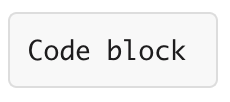
«`текст

1. текст
Чтобы увеличить отступ, нажмите Пробел четыре раза

* текст
Чтобы увеличить отступ, нажмите Пробел четыре раза

Заключите текст в квадратные, а ссылку — в круглые скобки:
[your text] (ссылка)
Если вы хотите пообщаться со специалистом службы поддержки, напишите по адресу feedback@slack.com.
Если вы хотите пообщаться со специалистом службы поддержки, напишите по адресу feedback@slack.com.
Если вы хотите пообщаться со специалистом службы поддержки, напишите по адресу feedback@slack.com.
Ой! У нас сложности. Повторите попытку позже.
Designing and formatting messages in Slack
Tips to make your messages quicker and easier for everyone to read
By the team at Slack 5th December 2019 Illustration by Pete Ryan
Good design brings clarity to conversations. Though most of what people type into Slack is plain text, thanks to a slew of formatting options you can add emphasis and hierarchy (along with a few emoji) to your longer messages to give them structure and help you get your point across better.
Thoughtfully laid-out messages don’t need to be your focus for every interaction in Slack, but they can be extremely helpful in specific contexts—such as announcements or summaries, in-channel meetings or when posting requests for others—to help people scan them faster and quickly glean the most relevant points.
The basics of Slack’s message composer
When you’re writing a message in Slack, press the Aa button to reveal a formatting panel in both Slack’s desktop and mobile apps. Highlight any text you’ve written then click options like bold, italics, strikethrough or code format to give messages the right emphasis or to make key excerpts stand out.
Aside from text formatting options, there are also buttons to create ordered or unordered lists, and blockquotes—all of which are great for breaking up big blocks of text and adding some illustrative detail. Combine these with shift + enter (or the return key on mobile) to add lines, breaking up long messages.
You can use these basic formatting options to communicate more clearly and concisely in Slack.
Do you prefer to format text with markup?
If so, go to Preferences > Advanced > Input options, where you can select Format messages with markup. This will hide the text formatting toolbar when you’re crafting a message.
Clean message formatting for easy standups
For small teams at any organization, it’s useful to have a public channel for the group to communicate about work and post daily updates (the latter replaces time-consuming, in-person standup meetings). It’s a great way to keep everyone informed and maintain visibility for the whole team.
Slack’s content team uses the command /remind #team-editorial
at 9:45am every weekday Hey @editorial-team What’s on today? to prompt us each morning to post updates on our current projects. You can also ask for weekly reflections to share successes or lessons learned. Using simple bullet points or emoji, the result is a clean, scannable list that a manager can review quickly when needed.
You can also use emoji to indicate the status of items on lists. For example, a project that’s nearing completion gets a 🔵 as its bullet, a task in progress gets a ⚪️ and any projects struggling with blockers get a 🔴. Managers can quickly see which tasks need additional resources to move forward, and which are on time.
Writing companywide announcements in Slack
Companywide announcement channels are another place where subtle design cues can make your messages more intuitive and easier to read.
Imagine that every Monday morning, your internal communications team posts to an organization-wide channel highlighting notable things happening that week, such as learning opportunities or open benefits enrollment. These updates are often loaded with information, so a combination of emoji and bolded titles can help break up the wall of text into digestible chunks.
You can use the same principle for teamwide announcements. In Slack’s companywide #sales channel, our team celebrates every major contract with a summary of data, including deal size, company details, shoutouts to employees who helped and lessons from the process. It’s easy for anyone in the company to scan the feed of new sales, get a handle on the team’s output and celebrate wins.
Designing message workflows for requests and approvals
Since introducing Workflow Builder in Slack, we’ve used it for dozens of channels dedicated to fielding requests, like asking the IT team for help, or notifying the PR team that an interview request needs review. Submitters can use Workflow Builder to launch a standardized form, which, once completed, is sent into channels or direct messages for review.
Imagine a channel where you could give the office team a heads-up when a customer is arriving for a meeting, so the team can prepare a conference room and food and beverages. Your form would look like so:
Forms you create can be customized before appearing as results in a message. Using the ideas we learned about text emphasis and emoji to help denote hierarchy, formatting your results means staff can quickly scan requests, easily find the key information and approve requests on the spot.
Putting it all together
The next time you have more than a line of information to share, try out a few ✅ formatting ideas to make it more readable. Formatting your messages can be a clear and courteous way to share information more easily with your colleagues.
Использование Slack
Узнайте все о Slack, например о том, как работает поиск, как устроены каналы, и о многом другом.
Создание или вставка фрагментов кода в Slack
Фрагменты — это удобный способ быстро обмениваться элементами кода, файлами конфигурации или журналами в своем рабочем пространстве.
Примечание. Сейчас нельзя создавать фрагменты и обмениваться ими в мобильных приложениях Slack.
Добавление нового фрагмента
Чтобы создать фрагмент и при необходимости поделиться им в беседе, выполните следующие действия:
Совет. Если вы уже начали печатать, можно нажать ⌘ Shift Enter (Mac) или Ctrl Shift Enter (Windows/Linux), чтобы открыть всплывающее окно и преобразовать существующий текст во фрагмент.
Просмотр фрагментов в рабочем пространстве
Чтобы посмотреть фрагменты в своем рабочем пространстве, используйте Браузер файлов.
Редактирование фрагмента
Фрагменты, которые вы создали, можно редактировать. Редактировать фрагмент может только создавший его пользователь.
Публикация фрагмента
Если вы поделитесь фрагментом в Slack, другие участники смогут скачать его, посмотреть исходный текст и оставить комментарии. Поделиться фрагментом можно при создании или в любой момент позже.
Если вы хотите пообщаться со специалистом службы поддержки, напишите по адресу feedback@slack.com.
Если вы хотите пообщаться со специалистом службы поддержки, напишите по адресу feedback@slack.com.
Если вы хотите пообщаться со специалистом службы поддержки, напишите по адресу feedback@slack.com.
Ой! У нас сложности. Повторите попытку позже.
Formatting text for app surfaces
App surfaces — such as messages, modals, or Home tabs — can contain all types of textual treasures.
The Block Kit elements that form the layouts for these surfaces frequently use text objects to insert all kinds of content.
These instructions are also handy if you are retrieving messages and want to understand how to interpret the formatting syntax.
These are developer instructions covering content posted to Slack via APIs. For user instructions on text formatting in Slack clients, consult this help center article.
Escaping text
First, it’s important to know that there are some characters in text strings that must be escaped.
Slack will take care of the rest.
You shouldn’t HTML entity-encode the entire text, as only the specific characters shown above will be decoded for display in Slack.
Basic formatting with mrkdwn
mrkdwn is also the default formatting method for the top-level text field in a message object when using the Web API to publish a message.
Finally, mrkdwn can be used within secondary message attachments by using the mrkdwn_in field as shown in the relevant reference guide.
This formatting is similar to Markdown markup, but with its own syntax, shown below.
Visual basics
These basic visual styles are very simple to use:
will produce strikethrough text
Line breaks
You can use multi-line text in app-generated text. Insert a newline by including the string \n in your text. For example:
Will produce the following formatting:
Quotes, inline code blocks, lists
These styles help to organize or differentiate text for different purposes.
Block quotes
You can highlight some text as a block quote by using the > character at the beginning of one or more lines:
Code blocks
If you have text that you want to be highlighted like code ( like this ), surround it with back-tick (`) characters:
Text within inline code blocks will not use any other formatting, so it can be useful even if you’re not displaying actual code.
You can also highlight larger, multi-line code blocks by placing 3 back-ticks before and after the block:
Lists
There’s no specific list syntax in app-published text, but you can mimic list formatting with regular text and line breaks:
Links
To link to URLs casually in conversation, include the URL directly in mrkdwn text and it will be auto-transformed by the server into a link:
You can also use mrkdwn to manually add links:
Adjust the text that appears as the link from the URL to something else:
And create email links:
Links in retrieved messages
When you use any of the messaging APIs to retrieve a message, you’ll see that auto-transformed URLs are shown in the mrkdwn format. So this:
Will be represented in the API as:
While this message:
Will be retrieved in this form:
Emoji
Emoji can be included in their full-color, fully-illustrated form directly in text.
Once published, Slack will then convert the emoji into their common ‘colon’ format. For example, a message published like this:
will be converted into colon format:
If you’re publishing text with emojis, you don’t need to worry about converting them, just include them as-is.
If you’re retrieving messages, you’ll receive the emojis in colon format, so you might want to convert them back to their unicode emoji form.
The compatible emoji formats are the Unicode Unified format (used by OSX 10.7+ and iOS 6+), the Softbank format (used by iOS 5) and the Google format (used by some Android devices). These will be converted into their colon-format equivalents.
Advanced formatting with special parsing
We told you earlier about the need to escape certain strings in text objects. These strings are used to trigger special parsing of the text, like user mentions or advanced date formatting. Read on to learn more about this advanced formatting.
Linking to public channels
Text can refer to a public Slack channel and transform that reference into a link to the channel itself. This uses a similar mrkdwn syntax as regular URL links:
#C024BE7LR is the channel’s ID. Your app can get this ID from an interaction request payload, from the Event API payload sent when one of the event types occurs, or by looking it up directly with the conversation-related methods of the Web API.
You can also manually retrieve a specific channel’s ID from its URL (highlighted here):
When text containing the channel linking syntax is published in an app surface, the ID will be automatically converted to show the actual name of the conversation.
Remember you can only link to public channels. If you try to include a link to a private conversation, it will display as raw text.
If you’re retrieving messages, use the conversations.info Web API method to lookup by channel ID and find out other relevant information (such as the actual name of the channel).
Mentioning users
A mention is a special type of reference that will provide a link to the mentioned user’s profile in the published text.
If the mention is included in an app-published message, the mentioned user will also be notified about the reference. The help center page for mentions describes what that notification process looks like.
To mention a user in app-published text, you need to provide their user ID in the following syntax:
Your app can get this user ID from an interaction request payload, from the Event API payload sent when one of the event types occurs, or by looking them up via the users.list Web API using another unique piece of information you have about them (such as their email address).
You can also manually retrieve a specific user’s ID by clicking on the overflow button in their Slack profile, and choosing the Copy member ID option, as shown in the screenshot.
When text containing the user-mention syntax is published by an app, the ID will be automatically converted to show the display name of the user.
If you’re retrieving messages, you can use the users.info Web API method to lookup by user ID and find out other relevant information, such as their display name.
Mentioning groups
As with users, you can mention user groups, which will link to the group’s profile.
If the mention is included in an app-published message, Slack will notify each user in the group about the mention.
To mention a user group in app-published text, you need to provide the group ID in the following general syntax:
!subteam^ is a literal string that should not change, but ID should be replaced with the actual user group ID. Here’s an example:
Your app can get this group ID from the Event API payload sent when one of the subteam event types occurs, or by looking them up via the usergroups.list Web API.
You can also manually retrieve a specific user group’s ID from the URL shown when viewing its profile (highlighted here):
When text containing the user group mention syntax is published by an app, the ID will be automatically converted to show the name of the user group.
If you’re retrieving messages, you can use the usergroups.list Web API method to lookup by user group ID and find out other relevant information.
Special mentions
These special groups should be mentioned sparingly, as they tend to notify a large group of users. We don’t have any specific guidelines, but use your discretion and favor mentioning individuals or more specific groups where possible.
There are a few core user groups built into Slack that can be mentioned in app-message text. These are:
To add these to an app-published message, use the following syntax:
Date formatting
Text containing a date or time should display that date in the local timezone of the person seeing the text. For app-published text, there is a handy date syntax available to format a Unix timestamp, and Slack will handle the timezone localization for you.
The command will format the timestamp using tokens within a string that you set, and it must include some fallback text for older Slack clients. Here’s the general syntax to use:
This wall of text can be broken down as follows:
Here are some examples of date formatting strings:
If you’re retrieving messages, you will receive the string back in its original format, and you can use the information above to parse it if necessary.
Automatic parsing
Above, we explained how to include various types of special syntax in your app-published text. What we didn’t mention is that you can just include the same text as a user would post directly in Slack to achieve some of these things. For example, given the following text:
Most of these references can be automatically parsed upon publishing to turn them into links or mentions:
You can achieve this in different ways, depending on where the text is being placed:
Disabling automatic parsing
If you want to disable automatic parsing, you have a couple of options depending on the type of text:
Why you should consider disabling automatic parsing
Even with this functionality available, we still recommend that you use the manual methods shown above. (This is also why we didn’t mention it earlier.)
Another good reason to disable automatic parsing is to be more explicit about where you want to include links and mentions. This could prevent random text from being unintentionally parsed and turned into one.
We’ve already deprecated this functionality for user mentions, so always parsing manually will keep you prepared in case automatic parsing is deprecated for other entities like conversations or user groups in the future.
Disabling formatting
If you want to turn Slack’s markdown-like processing off, you have different options depending on where the text is:
Notes on retrieving formatted messages
If you’re retrieving messages, we’ve included some extra details in the sections above to help you parse the formatting syntax. This will let you properly format it for display on a different service, or to help your app fully understand the intent of a message. Here are the general steps involved for detecting advanced formatting syntax:
Beyond formatting
This guide gives a taste of the possibilities offered by simply formatting and modifying the text included in each app surface.
But there’s even more you can do to change the visual composition of those app surfaces.
Read our Block Kit guides to learn how to use blocks and block elements to compose complex layouts.


